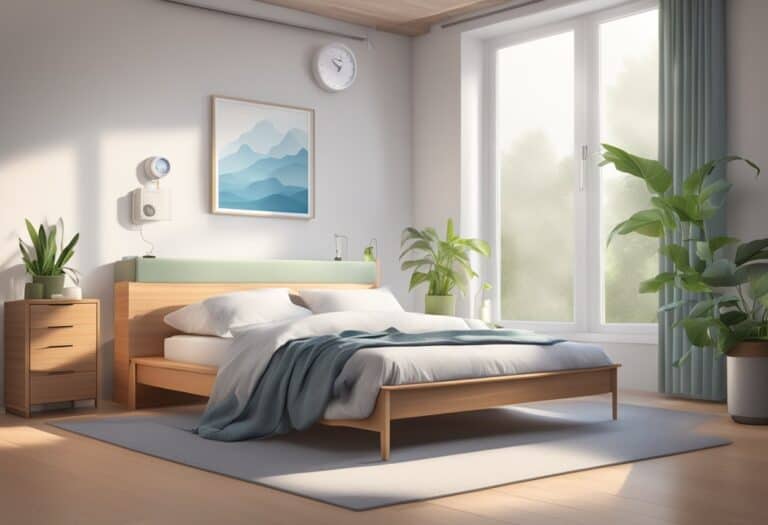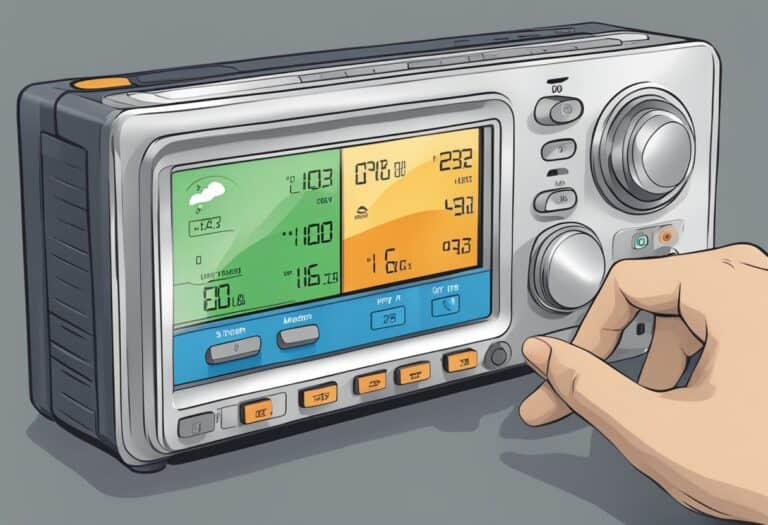Understanding the difference between a humidifier and a dehumidifier is essential for maintaining a comfortable and healthy indoor environment.
A humidifier adds moisture to the air, which can be beneficial in drier climates or during winter months when heating systems can reduce indoor humidity levels. By doing so, it can alleviate symptoms of dry skin, throat irritation, and can even help to preserve wooden furniture and musical instruments that may be sensitive to low humidity levels.
Conversely, a dehumidifier removes excess moisture from the air, which is particularly useful in areas with high humidity levels. High humidity can contribute to discomfort as it makes the air feel warmer and can promote the growth of mold, dust mites, and other allergens.
A dehumidifier can help prevent these issues, creating a more comfortable and safer living or working space.
Humidifiers add moisture to the air, beneficial in dry conditions, while dehumidifiers remove moisture, useful in humid environments. Both aim to maintain comfortable indoor humidity levels.
Basics of Humidifiers and Dehumidifiers
Understanding the role of humidifiers and dehumidifiers is essential for maintaining comfortable and healthy humidity levels in your environment. They are used to control moisture levels in the air, but serve opposite functions.
What Is a Humidifier?
A humidifier adds moisture to the air, increasing the humidity level. This can alleviate symptoms of dry skin, respiratory discomfort, and static electricity in your home. There are several types of humidifiers:
- Ultrasonic: Produces a fine mist using ultrasonic vibrations.
- Cool mist: Evaporates water into the air without using heat.
- Warm mist: Heats water to a boil, then cools the steam before expelling it into the air.
To measure humidity, you can use a device called a hygrometer to ensure that the levels remain comfortable.
What Is a Dehumidifier?
Conversely, a dehumidifier removes moisture from the air, lowering humidity levels. High humidity can lead to condensation, mold growth, and an uncomfortable clammy feeling. Types of dehumidifiers include:
- Refrigerant (or compressor): Cools air so water vapor condenses and is collected.
- Desiccant: Uses a hygroscopic material to absorb moisture from the air.
Both devices are important for creating a balanced indoor climate, especially in areas prone to extreme humidity or dryness.
Comparing Technology and Functionality
Humidifiers and dehumidifiers use different technologies to manage humidity levels:
- Humidifiers release water vapor into the air to increase moisture levels.
- Dehumidifiers remove water vapor from air to reduce moisture levels.
Your choice between the two will depend on your specific need to add or remove moisture from your environment. Regular monitoring of your space’s humidity level with a hygrometer will guide you in maintaining an optimal range, typically between 30-50%.
Health and Comfort Considerations
When considering the health and comfort of your indoor environment, it’s crucial to understand the impact of relative humidity levels. The balance of moisture in the air can influence respiratory conditions, skin health, and allergy symptoms.
Effects on Respiratory Health
Maintaining optimal indoor humidity is essential for your respiratory health. High humidity can exacerbate conditions like asthma and bronchitis, as moist air promotes the growth of mold, mildew, and dust mites. Conversely, dry air can lead to dry skin, irritation of the respiratory tract, and increased coughing. Devices like humidifiers and dehumidifiers can help regulate these conditions, but it’s critical to manage them properly.
Managing Allergies and Asthma
For those with allergies or asthma, the quality of air can have a direct impact on your well-being. Allergens such as pollen, pet dander, and dust mites thrive in environments where humidity levels are imbalanced. A dehumidifier can reduce excess moisture and consequently reduce the presence of allergens and bacteria. On the other hand, a humidifier can add necessary moisture to the air, which can help soothe irritated airways and reduce allergy and asthma symptoms.
Comfort in Various Temperature Conditions
Your comfort at home is greatly affected by the level of indoor humidity. In warmer temperatures, high humidity can make the air feel sticky and dense, leading to discomfort. A dehumidifier can remove excess moisture, providing a cooler environment. In contrast, when the air is too dry, especially during colder months, a humidifier can add moisture to the air, preventing issues like dry skin and providing a more comfortable indoor climate.
Practical Insights and Usage Tips

To make the most of humidifiers and dehumidifiers, it’s essential to understand when to use each, how to maintain them effectively, and what their energy consumption means for you.
When to Use Each Device
Humidifiers are beneficial when the humidity level in your home falls below 30%, which often happens during winter. If you’re experiencing dry skin, static electricity, or if your wooden furniture is cracking, a cool-mist humidifier or warm-mist humidifier can add the necessary moisture to the air. Whole-house humidifiers, which work with your air conditioning system, can maintain a consistent humidity level throughout your house.
In contrast, dehumidifiers are useful when the humidity levels exceed 50%, which can promote mold and mildew growth. You might need a dehumidifier if you live in a damp climate, have a basement that smells musty, or notice condensation on windows. Whole-house dehumidifiers integrated into your HVAC system can reduce moisture levels throughout your home, and models with a humidistat give you precise control over air humidity.
Maintenance and Upkeep
Humidifiers:
- You should change the water daily to prevent bacterial growth.
- Clean weekly with vinegar; for ultrasonic humidifiers, use distilled water to avoid mineral buildup.
- Replace items like filters and cartridges as instructed by the manufacturer.
Dehumidifiers:
- Empty and clean the water reservoir regularly.
- Check and replace the filter to prevent dust build-up and maintain efficiency.
- Wipe down surfaces and ensure the air intake and exhaust are not obstructed.
Energy Consumption and Efficiency
Humidifiers vary in energy consumption. Steam vaporizers tend to use more electricity but are effective at killing germs like the flu virus. Evaporative humidifiers and impeller devices consume less energy. To optimize usage, pair them with air purifiers for improved air quality and regulate them with a humidistat or thermostat to run only when necessary.
Dehumidifiers, such as desiccant dehumidifiers, can have higher energy consumption depending on the type and size of the space. Using an air conditioner during humid seasons may help as it removes moisture from the air while cooling it. To save on energy costs, select a dehumidifier model endorsed by the U.S. Environmental Protection Agency for energy efficiency, and ensure it’s the correct size for your space.
Impact on Indoor Environment
When it comes to maintaining a comfortable and healthy indoor space, understanding the roles of humidifiers and dehumidifiers is crucial. Both devices significantly affect indoor humidity levels, mold growth potential, and overall air quality.
Preventing Mold and Mildew
Excess moisture in your home can lead to the growth of mold and mildew. By using a dehumidifier, especially in damp areas or during high humidity summer months, you can keep humidity levels below 50%, inhibiting mold spores and fungi proliferation. Controlling indoor relative humidity also combats dampness that is conducive to mold growth.
Controlling Humidity for Comfort and Health
For personal comfort and health, keeping the indoor relative humidity between 30-50% is ideal. High humidity can worsen conditions like eczema and create an environment where disease-causing bacteria thrive. Conversely, a humidifier adds necessary moisture to the air in your home during dry seasons or in arid climates, preventing issues like cracked skin and facilitating better respiratory health by alleviating congestion.
Improving Overall Air Quality
A balanced indoor humidity level helps reduce the presence of allergens and microorganisms. By managing indoor humidity, humidifiers and dehumidifiers work to maintain optimal living conditions while an HVAC system effectively circulates and filters the air. It’s worth noting that certain minerals in water used by humidifiers can cause white dust if not properly filtered, and this can affect air quality. Additionally, maintaining the right humidity can lessen static electricity, which, aside from being a nuisance, can attract more dust and particulate matter to surfaces in your home.
Frequently Asked Questions
When considering the air quality in your home and how it affects allergies and other health conditions, understanding the differences and uses of humidifiers and dehumidifiers is crucial to making an informed decision.
What are the benefits of using a humidifier or dehumidifier for allergies?
Humidifiers add moisture to the air, which can alleviate allergy symptoms by preventing the drying of nasal passages. On the other hand, dehumidifiers reduce excess moisture, which can lower the presence of mold and dust mites that often exacerbate allergies.
Should I choose a humidifier, dehumidifier, or a combination unit to alleviate stuffy nose symptoms?
If your stuffy nose is due to dry air, a humidifier can add the necessary moisture. However, if high humidity is contributing to nasal congestion, a dehumidifier might be the better choice. A combination unit allows you to adjust the humidity level to your comfort, addressing both concerns.
How do humidifiers and dehumidifiers differ in their approach to managing mold issues?
Humidifiers increase moisture levels, which is not ideal when addressing mold issues, as mold thrives in moist environments. Dehumidifiers reduce humidity, making your space less hospitable to mold growth.
Can you explain the distinctions between humidifiers, dehumidifiers, and air purifiers?
Humidifiers increase the humidity in your home, dehumidifiers reduce it, and air purifiers cleanse the air of pollutants but do not affect moisture levels. Each serves a unique purpose for maintaining indoor air quality.
What is more effective for treating a cough: a humidifier or a dehumidifier?
A humidifier is generally more effective for treating a cough related to dry air by moistening the throat and relieving irritation. However, if the cough is due to allergens in a damp environment, a dehumidifier may help alleviate the cough by reducing humidity and allergen presence.
Which is better for a baby’s nursery to ensure optimal breathing conditions: a humidifier or a dehumidifier?
For a baby’s nursery, a humidifier may be better if the room is dry, as it can maintain a comfortable humidity level for optimal breathing. A dehumidifier could be necessary if the room is too damp, as excess moisture could harm a baby’s sensitive respiratory system.




![Best Rain Gauge Reviews ([year])](https://observationhobbies.com/wp-content/uploads/2024/01/Best-Rain-Gauge-Reviews-768x525.png)

![Best Home Weather Stations: Top [year] Picks](https://observationhobbies.com/wp-content/uploads/2024/01/Best-Home-Weather-Stations-768x525.png)
